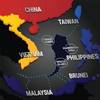The environmental ambitions of the politicians in Hordaland were very high when it came to cutting emissions from ferry operations. A tender for new ferries, supported by DNV GL, resulted in a record investment of 140 million euros in zero-emission technology.
When ferries pass the stunning scenery of Norway’s Hordaland County today they leave a sizeable pollution and CO2 footprint behind. Hordaland’s 20-vessel ferry fleet has an average age of 29 years and emits as many noxious fumes as all the buses of the county combined.
With the current contracts expiring between 2018 and 2020, this seemed to be a good starting point for a review of the entire fleet and the definition of new, low emission targets. And the ambition went high.
The county administration commissioned Skyss, the agency organizing public transport, tasking them with a significant reduction of emissions and energy usage.
“We were to cut down emissions at least to levels in line with the global two-degree target,” Karl Inge Nygård from Skyss explains. The complex process of building a successful tender for new contracts with a ten-year term required a sophisticated tendering model. External expertise from the industry was essential for defining appropriate targets and measures.
“In relation to both the preparation and the implementation of this procurement project we have been fully dependent on special expertise in environmental technology at sea,” Nygård explains. In a separate tender, DNV GL was selected as the partner to support the process of establishing an environment-friendly ferry business for Hordaland.
“We are very pleased with the quality of the assistance we have received from DNV GL,” Nygård says. “From DNV GL’s side, the key challenge was to help the client walk the talk on real change, not just moderate improvements. This has been possible thanks to the combination of highly ambitious industry players and a courageous public procurer,” says project manager Martin Christian Wold from DNV GL.
The next step is to follow up with the operators on the contract requirements. After all, this is about the cost-efficiency of a public investment of nearly 900 million euros on ferry services, including new ferries as well as 140 million euros for low-emission technology both on board the vessels and for the charger infrastructure on shore.
This sum covers battery systems on board the ships, automatic mooring systems to keep the ferries still and save energy while charging, buffer batteries on land and upgrades to the power grid. Charging and battery technology as well as prices have evolved significantly in recent years, which means that most ferries in Norway will be able to operate electrically in future.
DNV GL expects no new LNG-fuelled vessels to be ordered for Norwegian trade; in fact, some existing LNG ferries will likely be retrofitted for electrical or hybrid propulsion.










